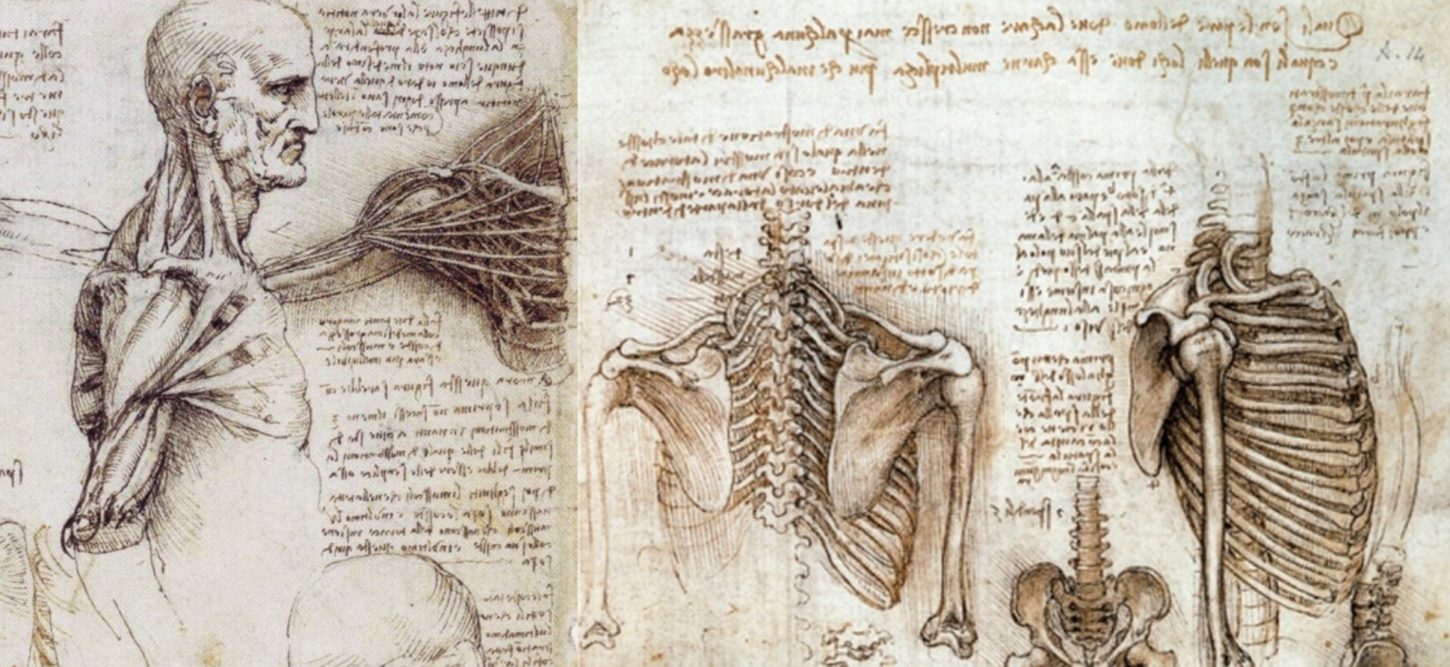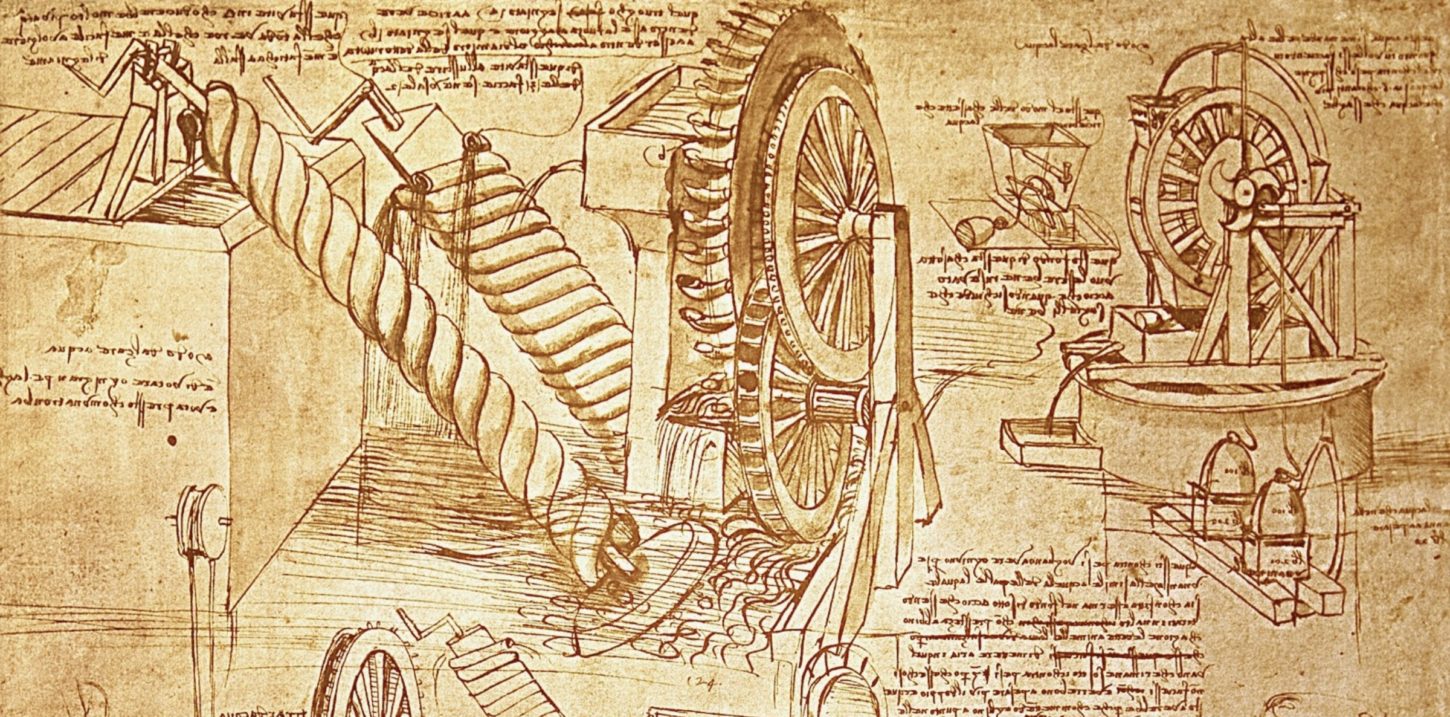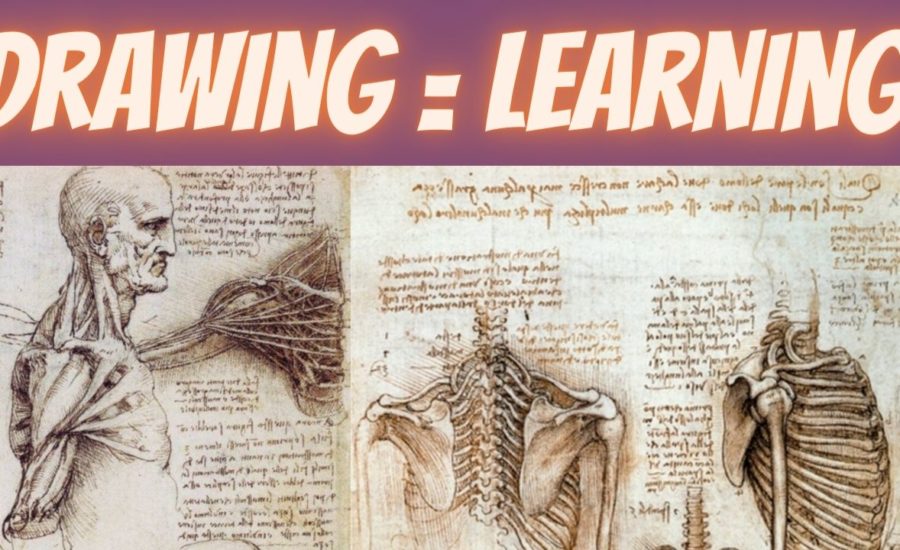What is drawing good for? Two main things in my opinion: decoration and learning. In today’s world we are so focused on the first benefit that we often forget drawing as a learning tool which is much more important. Everyone thinks that drawing is for making something pretty to hang on the wall or to express our inner creativity. However, drawing is much more than that. Drawing is a learning tool.
Drawing is a powerful tool for learning and has been used for centuries to enhance our understanding of the world and to develop visual communication skills. Whether it is for design, architecture, scientific illustration, or architectural design, drawing has the ability to help the artist and the audience solve visual problems. Let’s explore how drawing has been used as a learning tool throughout history and how it continues to be an effective tool for learning in various fields today.

Historical Examples of Drawing as a Learning Tool:
- Scientific and Botanical Illustration: Scientific illustration has been used for centuries to document and communicate observations about the natural world. From Leonardo da Vinci’s detailed drawings of human anatomy to the illustrations of plants and animals in early natural history books, scientific illustration has been an essential tool for understanding and sharing knowledge about the natural world.
- Creativity Enhancement: Drawing has long been used as a means of artistic expression, and has been an integral part of art education for centuries. From the Renaissance to the present day, drawing has been considered a fundamental skill for artists, as it allows them to develop their observational skills, refine their technique, and express their ideas visually.
- Technical Drawing: Technical drawing has been used for centuries to communicate and design everything from buildings and machines to maps and graphs. Technical drawing is a precise and highly technical form of drawing that requires a solid understanding of mathematical concepts and the ability to translate abstract ideas into visual form.

Modern Examples of Drawing as a Learning Tool:
- Architecture: Architecture is a field that heavily relies on drawing as a tool for learning and design. Architects use drawing to explore and communicate their ideas, to create detailed plans for building projects, and to develop a visual understanding of the spaces they are designing. Unfortunately, much of this is being replaced by digital rendering.
- Nature Journaling: This is a powerful new practice that uses drawing as a learning tool. Through sketches, notes, and diagrams the practitioner learns about nature around them. Learn more about nature journaling in this post. In the above image you can see a sketchnoting example by Mike Rohde.
- Sketchnoting: Sketchnoting is a visual practice that combines sketches and notes to learn and communicate information in better and more interesting ways. You can learn more about sketchnoting here.
- Science and Technology: Today, drawing continues to be an important tool for learning in the fields of science and technology. From diagrams of complex scientific concepts to technical illustrations of machinery, drawing remains an essential tool for understanding and communicating ideas in these fields. Despite advances in photography and digital rendering traditional drawing has remained vital.
- Education: In recent years, drawing has gained popularity as a tool for learning in various educational settings, including primary and secondary schools, as well as higher education institutions. Studies have shown that drawing can help students better understand and retain information, and can be an effective tool for fostering creativity and critical thinking skills.
Key Learning Benefits of Drawing:
- Enhances Understanding: Drawings can be a powerful tool for enhancing our understanding of complex concepts, whether they are scientific, mathematical, or artistic. By creating visual representations of ideas, we can better grasp and retain information, and can also identify areas that need further exploration.
- Fosters Creativity: Drawings can be a powerful tool for fostering creativity and imagination, as they allow us to express our ideas in a visual form. This can be especially beneficial for students, as it allows them to develop their own unique perspectives and to see the world in new ways.
- Improves Visual Communication Skills: Drawing is a visual language that requires us to translate abstract concepts into visual form. By practicing drawing, we can develop our visual communication skills, which can be useful in a wide range of fields, from scientific illustration to graphic design.

It is also worth mentioning that drawing is a highly accessible tool, as it requires no special equipment or training beyond a basic understanding of the materials and techniques. This makes it an ideal tool for learning and personal growth, as it is available to people of all ages, abilities, and backgrounds.
Conclusion
In conclusion, drawing is a powerful tool for learning that has been used for centuries to enhance our understanding of the world and to develop visual communication skills. Whether it is for artistic expression, scientific illustration, or architectural design, drawing has the ability to engage and inspire people of all ages and backgrounds. From historical examples of scientific illustration and artistic expression to modern applications in architecture and education, drawing remains an essential tool for learning and personal growth. With its numerous benefits, including enhancing understanding, fostering creativity, and improving visual communication skills, it is clear that drawing continues to play a significant role in the way we learn and understand the world around us.
Want to learn a practical way to use drawing as a learning tool?
If so, you might want t0 learn more about nature journaling and sketch-noting. Both of these practices focus on the learning benefits of drawing instead of the decorative benefits. In this way they can enhance any hobby, profession, or new learning challenge. Learn more about what nature journaling is in this video. If however, you want to learn about the related practice of sketchnoting check out this interview I did with Mike Rohde, one of the founders of sketchnoting.
Learn how to get started with nature journaling check out this post.
